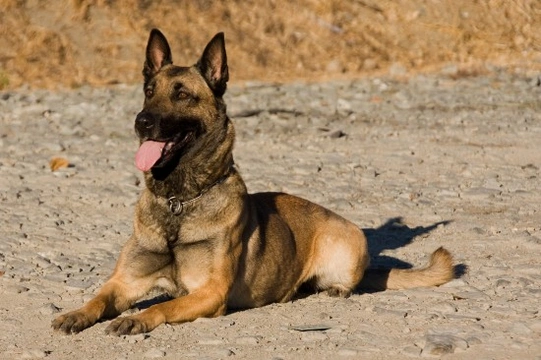
Belgian Malinois (Shepherd Dog) temperament and handling
The Malinois or Belgian Shepherd Dog is primarily a working dog that is still widely used by the military forces of both the UK and other countries, and the police in their native country of Belgium and other regions. At first glance, the Malinois or “Mali” is similar in appearance to the German Shepherd in terms of size and build, but the Malinois is available in a much wider range of coat colour and pattern combinations.
The Malinois is a breed that is becoming more common within the UK and other countries as a domestic pet rather than a working dog, although these dogs still retain the activity levels, temperament and intelligence of their working history. They can be a challenging breed to keep within a domestic environment without an experienced owner, and they are not a breed of dog of which ownership should be considered lightly. As with all breeds and types of dogs, it is important to do plenty of research if you are considering buying a Mali, and ensure that you are confident in having the experience and ability to handle and train them effectively.
In this article, we will introduce you to the basics of the Belgian Malinois temperament, training and handling.
The Malinois in working roles
The Belgian Malinois is an intelligent, active and versatile dog that is capable of learning and performing a wide range of higher-level commands. They are widely used in different countries in a hugely diverse range of roles, including police work, search and rescue, sniffer detection work, personal protection, property guarding and for sporting purposes. The Malinois was originally bred as a herding and livestock protection dog, but today, they are much more likely to be found working in the other roles mentioned above.
They are widely seen competing in canine sports such as agility, flyball and obedience events, and anything else that they can turn their paws to!
The Malinois within the domestic environment
The Malinois dog as a domestic pet is a relatively recent development in the dog’s history, and the transition from an active, working role to that of a family pet has not always been easy. While they share many of the same traits of loyalty, versatility and intelligence with the German Shepherd dog, the Malinois has only become popular as a household pet within the last twenty years or so, and so is still undergoing a period of adjustment.
Because the Malinois is intelligent, active and has lots of stamina, they will only thrive within a home environment if they are provided with plenty of outlets for these traits. They are not suitable to keep in a small apartment with only a couple of short walks per day; to thrive as a domestic pet, they need plenty of attention, lots of mental stimulation, and lots of time spent outside, exercising and stretching their legs.
Learning and taking part in canine sports alongside of their owners is one of the best ways to provide an outlet for the needs of the Mali when they are kept within the home as opposed to in a working role.
General temperament
The well-balanced and happy Malinois is friendly, protective, intelligent, alert and good-natured. They are hard workers with lots of stamina, and are among the most active of dog breeds, right up there with the Siberian Husky and the Border Collie in terms of their exercise requirements.
They bond strongly with their handlers and can work well with a range of handlers providing that their commands and responses are consistent, and they are generally keen to please within working and training roles.
Without sufficient exercise and stimulation, the Malinois will soon turn destructive and begin to display behavioural problems, and they can be a handful when this occurs, making them a bad choice for inexperienced owners who do not know how to provide appropriate outlets for their dog’s needs.
They also have a relatively strong hunting instinct, and this should be taken into account within the domestic environment where neighbours might keep smaller pets such as cats or rabbits.
Training and handling
The Malinois is highly intelligent and more than capable of retaining a wide range of training commands, but in order to be able to train them effectively, you must first gain their respect. The Mali is a confident and outgoing dog, so it is important that their trainer and handler is confident and experienced too, and capable of taking the alpha role over the dog and teaching the dog to follow their lead.
The Mali benefits from positive reinforcement training, and does not respond well to negativity or harsh treatment, which will soon make them uncooperative and unruly. Training should begin from a young age, and often progresses much faster than it does for many other breeds of dog, which the potential trainer or handler should be aware of!
Training should be viewed as an ongoing endeavour throughout the dog’s life, and sufficient outlets should be provided via training to meet the dog’s intellectual needs and need for exercise and entertainment.



